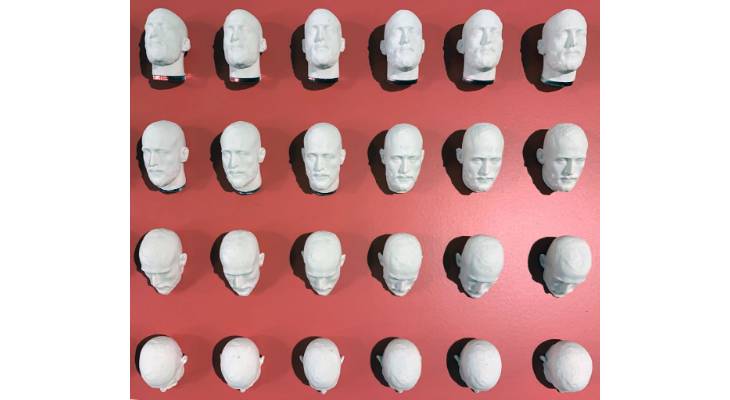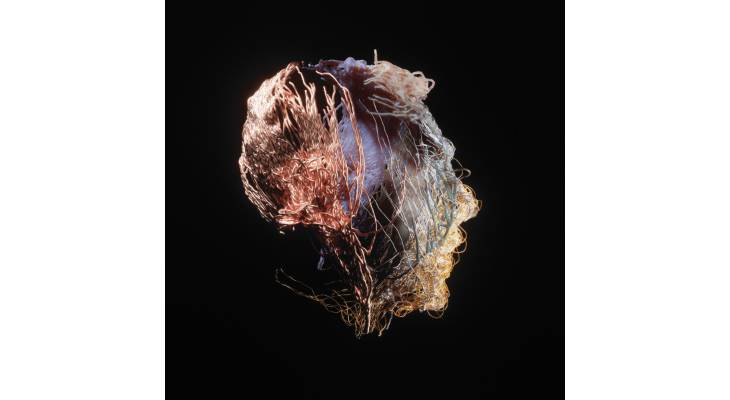Contemporary artist Kane Cali’s work is complex to define, but less hard to recognise. Deconstructed busts cast in concrete and glass that are layered with meaning, sculptural glass works that unveil a painstaking attention to detail, and of course, Malta’s ‘cheap and cheerful’ beloved snack, pastizzi, turned into desirable pieces of art.
His multi-disciplinary approach to his art makes his works as extraordinary as the processes he employs to create them, placing Kane in a distinctive league of his own. I catch up with the artist at a time when a lot is uncertain – Malta is in post-pandemic recovery mode, and life is gradually returning to a new kind of normal, with a lot left hanging in the balance, particularly for artists.
But every trial is an opportunity for Kane to explore – the lockdown period alone proved to be an introspective yet productive time for him, during which he created a small body of work using a growth simulator designed to grow virtual plants – but more on that later.
“Life and the process of living it, feeds into all my work,” says Kane, moulded by the perspectives, tools and people he met along the way, all of which shaped his unique skillset. As the great-great grandson of venerated artist Giuseppe Cali, art is an inherent part of him and his family.
“From a young age, learning that my great-great grandfather, and many other members of the family, had an artistic side to them and an artistic career – beyond Giuseppe Cali, there were also his uncles, namely Romero Cali, who had quite a journey in their own right – shaped my sense of identity.”
Early on after finishing secondary school, Kane pursued what interested him, and spent two years studying at MCAST, which had just opened its doors, to explore his curiosities. “At that time, I started looking at courses abroad as I wanted to pursue more focused studies, and that was quite a leap,” he states.

“We had just entered the EU so college fees were more affordable, and it seemed like a viable option, in a naïve kind of way,” he laughs.
“I don’t think I’d take the plunge now as I did back then, but I have no regrets – mistakes were made along the way, but they were necessary.”
Kane enrolled for a degree in 3D character animation in the UK, which gave him the backbone and confidence with computer software and 3D packages – crucial skills for his work later on.
After two years, craving a tangible element to his creativity beyond a keyboard, he changed course and attended the University for the Creative Arts for a degree in 3-Dimensional design glass, followed by a Master of Arts in ceramics and glass at the prestigious Royal College of Art in London.
“Attending the RCA was quite a milestone. There were a few hundred Chinese and Korean students, and one Maltese,” he says.
Kane gained work experience in London, producing works for exhibitions and private commissions, before being offered to work with art dealer and collector Adrian Sassoon, who deals in antiquities and contemporary ceramics and glass.

“I was offered to represent the London office, but at that time I was also thinking of moving back. I was battling with the ‘what do I want with my life’ dilemma – do I represent artists or become the artist? That’s when I decided to return to Malta and work from here,” says Kane. By moving away from the 3D and virtual world towards specialising in the use of materials, Kane successfully found a middle ground between the two.
“That is when I understood my identity as an individual and what I found joy in. It took experiencing too much of one thing to understand the lack of the other,” he explains.
Learning 3D character building and the science behind it has, in fact, been central to several of the artist’s recent works. Kane uses data obtained from 3D scans to build a picture, “as you would with pigment to paper. I’ve been using life models in most of my more recent work and often invite individuals to the studio to get 3D scanned.”
The data, he explains, is used as a point from which to manipulate. “I use a device, the mechanical eye, which collects information from the live models I work with as points in space.
The work is centred around identity – I ask the models to sit, and they usually ask me what to do, but I just need them to be present, without smiling, frowning or adding emotion,” he shares.
Capable of collecting any kind of data, from architecture to inanimate objects, I ask Kane why he focuses on people. “Because I’m working with identity, humans are what you continue to return to. There is also a historic reference to our obsession with busts, portraiture and self-reflection, as well as representation through material, such as marble,” says Kane. Not one to limit the application of his skills, Kane has produced works in glass, concrete, stone, marble, and paper, among others.
“Materiality has always been a curiosity of mine – exploring ways to give rise to and control volumes that in turn create works is essential to the way I wish to communicate. Different mediums each speak their own language. I like to work with materials that say something and associate thematically most of the time.”
Materials also reference history, and the artist asserts, “if you want to say something, you can say a little bit more with the choice of material. Marble, for instance, comes with a lot of historical baggage.” Currently, Kane is experimenting with yet another material, spurred by his reaction to the global antiracist Black Lives Matter movement.
“I’m using volcanic ash in the mix of materials and working with models of colour to extend my body of work in a way that reflects the current realities we’re facing.” Pressed to pick a favourite material, Kane says he has a long-standing love for glass, but space constraints at his Valletta studio forced him to shift his focus, for now.
“Glass is a very difficult material to work with – it’s greedy, you need the right conditions to make sure it works from start to finish, and you need space for equipment, but I love it for its weight, its colour retention, colour spectrum and refractive elements,” he maintains. For one of his recent solo exhibitions in Malta, called Human_Construct, held at Blitz in Valletta in 2017, Kane drew inspiration from his love for glass and experimenting with new materials, as well as his fascination with exploring identity through artistic and technological processes.
“Conceptually, Human_Construct stemmed from a reflection on identity within our times through the construction of ephemeral data and how we represent ourselves both online and offline,” he asserts. He went on to interpret this in various ways – through marble, concrete and holographic works, solid glass pieces as well as life-sized busts created with white concrete and cast bits of crystal.
For the latter, he conducted 3D scans of individuals, and cleaned the scans using digital brushes and applying modifications if necessary and requested by the models. “Rather than displaying a whole human bust, I wanted to remove the emotional element and break up a bust into blocks, to reiterate the idea of a construction.” The model was 3D printed in individual parts and a rubber mould was made of each part. The forms were then cast in white Portland concrete, while a few were reserved to be cast in glass. “They were built in around 40 odd parts and, with the help of a fellow artist friend, we assembled the pieces together.”
This is an extract of an interview first carried in the July/August edition of The Commercial Courier
Main Image:
